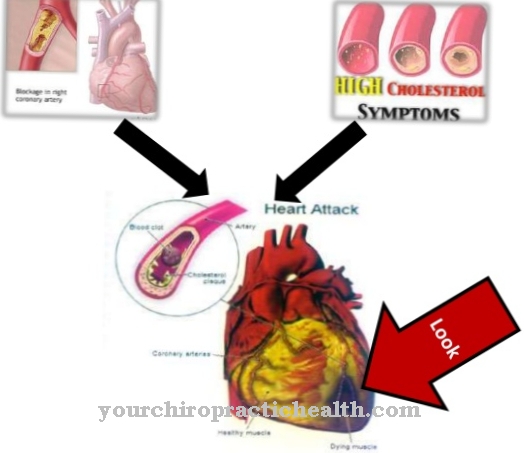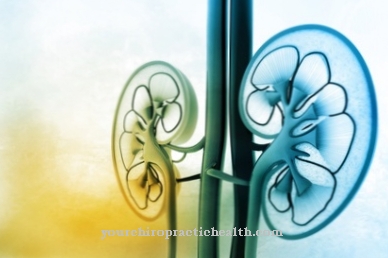Pentostatin is an active pharmaceutical ingredient that belongs to the group of antimetabolites and is used in the treatment of hairy cell leukemia. Hairy cell leukemia is characterized by an abnormality in the lymphocytes and is characterized, among other things, by a reduction in white and red blood cells and anemia.
What is pentostatin?

Pentostatin is an active ingredient with the chemical molecular formula C11H16N4O4 that doctors use to treat hairy cell leukemia. Hairy cell leukemia owes its name to the hair-like appearance of certain lymphocytes when the disease is present.
In the past, pentostatin was also used for other forms of leukemia, but it is now considered less suitable for this purpose, as severe side effects occurred when taking combination products. In Germany and other countries, doctors no longer use it in these areas and instead resort to other drugs and other forms of therapy.
Pentostatin dissolves in water and methanol and can be the only active ingredient in medicines or in combination with other active ingredients.
Pharmacological effect
According to the current state of knowledge, the effect of pentostatin is based on the inhibition of an enzyme in cancerous tissue. An enzyme is a biomolecule that consists of proteins and catalyzes, i.e. accelerates, biochemical reactions within organisms. Enzymes are substrate-specific, since an enzyme can only work with certain starting materials, and effect-specific, since they cannot perform any actions, but for example only cut a chain of molecules instead of bringing them together, expanding or reacting with them in some other way.
Pentostatin inhibits the enzyme adenosine deaminase, which is of great importance for the metabolism and especially the cell division of the tumor. However, adenosine deaminase is also found in other, healthy cells; Therefore, like many chemotherapy drugs, pentostatin is to some extent toxic. Since cancer cells divide particularly often, they are often more affected by the toxicity of such active substances than other cells in the human body and in this way pentostatin can possibly help to fight leukemia.
Medical application & use
Pentostatin can be used in the treatment of hairy cell leukemia. Hairy cell leukemia affects the human lymphatic system, which is of central importance for the immune system. For this reason, malignant hairy cell leukemia is one of the so-called non-Hodgkin lymphomas, which in turn is a chronic leukemia.
Three symptoms are particularly typical of hairy cell leukemia:
- Deficiency of the red blood pigment hemoglobin (anemia)
- low number of white blood cells (leukocytes) in the blood called leukopenia
- decreased number of blood platelets (thrombocytes), called thrombocytopenia.
These three core symptoms can lead to further symptoms in hairy cell leukemia, such as an increased susceptibility to infections, tiredness, dizziness and paleness. In addition, bleeding can take an unusually long time to stop.
In hairy cell leukemia, anemia, leukopenia and thrombocytopenia are possibly due to a malfunction of the bone marrow, which is essential for the synthesis of blood cells. Furthermore, people who suffer from this disease often have an enlarged spleen and less often an enlarged liver. The disease manifests itself on average only after the age of 50 and is generally rare.
The drug is usually taken via an infusion. In addition to pentostatin, other purine analogs can also be used to treat hairy cell leukemia.
Risks & side effects
Various side effects may occur when taking pentostatin. They can, but do not have to, occur together and can also appear in various combinations. In principle, doctors and patients have to agree on a case-by-case basis whether the relationship between risks and benefits appears appropriate for each individual. In medicine, interactions with fludarabine, cyclophosphamide and vidarabine are known. It is also not recommended if the patient has had a history of hypersensitivity to pentostatin.
The active ingredient can also cause what is known as myelosuppression, especially during the first few weeks of drug therapy with pentostatin. This is a complication that affects the patient's bone marrow and is therefore also known as bone marrow inhibition or bone marrow depression. In healthy people, the bone marrow makes blood cells. As a result of the medication, this function can be disturbed.
The potential side effects of pentostatin also include digestive system complaints such as nausea and vomiting as well as tiredness, [fever]] and an increased susceptibility to infectious diseases, which can be traced back to a disturbance of the immune system and which can aggravate existing infections.
In addition, some patients have decreased white blood cell and platelet counts when taking pentostatin. In order to discover the numerous possible side effects at an early stage, regular blood tests and further examinations usually take place during treatment.



























